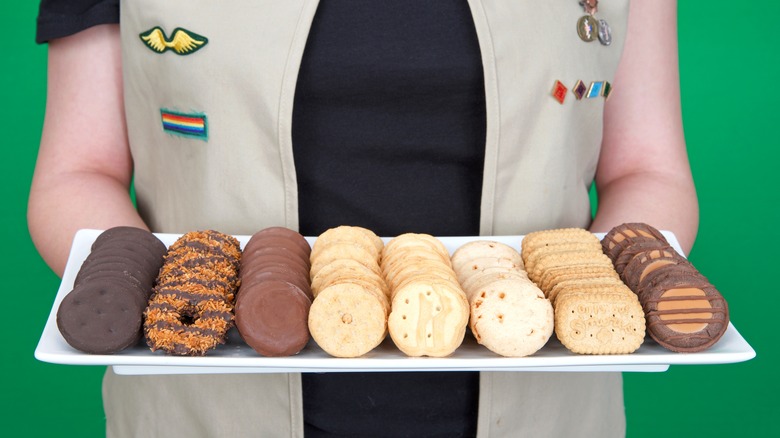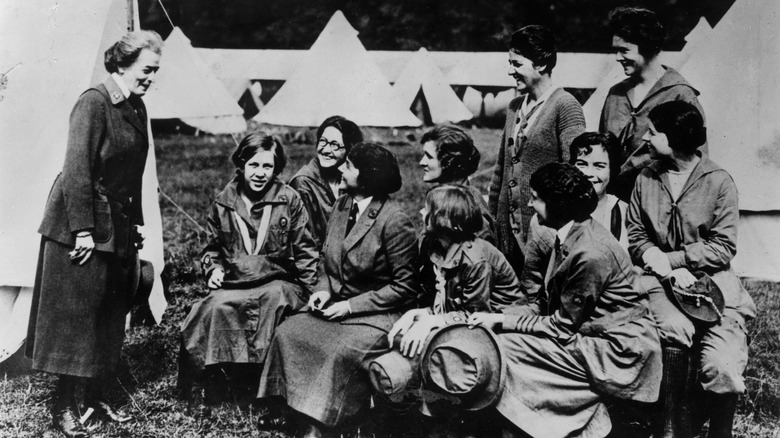Girl Scout Cookies Started As Homemade Treats Sold In Schools
Girl Scout Cookies have long been a staple dessert enjoyed across America. Whether you purchase them seasonally from your local girl scout troop who dole them out curbside or head to your local big-box store to search for them in the aisles, you likely have a favorite flavor you're always reaching for. You may be a die-hard Thin Mints fan, a Samoas stan, or always craving Tagalongs. But no matter what your go-to cookie is, you likely have strong opinions on the matter.
While plenty of people flock to grocery stores just for the cookies themselves, the money raised by the sale of each box goes somewhere good, too. Of course, you know it helps out the Girl Scouts of America, but how? Well, the funds raised are a crucial income stream for regional Girl Scout councils. It helps provide essentials from maintaining camps and properties to covering program materials to important outings and travel costs. So, with each sugary bite, you can know you're directly helping out a greater cause.
While these days it may be easy to find a few boxes of your favorite Girl Scout Cookies near you, it took a lot more luck just decades ago if you wanted to bite into a fresh Do-si-Do.
The Mistletoe Troop were the first to sell the cookie
In spring 1912, the first troop of the Girl Scouts of the U.S.A. was started in Savannah, Georgia. Only a few short years later, the game-changing idea to start selling cookies was born.
It was the Mistletoe Troop from Muskogee, Oklahoma that first started dishing out fresh cookies as a way to pay for Girl Scout activities. These cookies were made at home by both mothers and daughters, and the first selling location was out of their local high school's cafeteria. While bake sales may not seem like the most ingenious idea, the Girl Scouts soon started selling signature cookie recipes that grew a following.
The first cookies were variations on a classic sugar cookie. These cookies went on a commercial scale for the first time in the early 30's, and the 50's saw the start of selling three branded flavors, one of which is the now-iconic Thin Mint. This is also when the shift to having troops sell out at shopping malls began. Before this, each troop had girls go door to door, selling throughout neighborhoods or local businesses. Eventually, the packaging and selling got more advanced. Tinfoil packaging was added to ensure cookies would last fresher longer, Girl Scouts learn about marketing and business tactics, and the designs on the box grew more engaging.
Today, there's over 10 classic flavors that sell about 200 million boxes annually, according to Taste of Home. So, the next time you bite into a crispy Trefoils, thank a Girl Scout.

